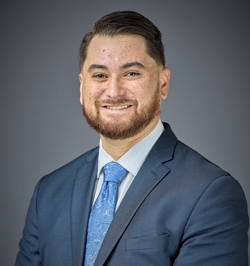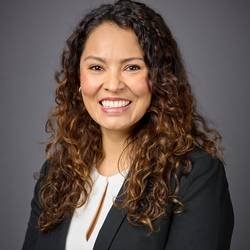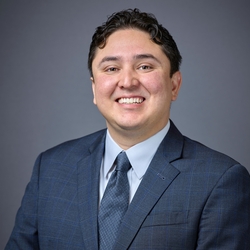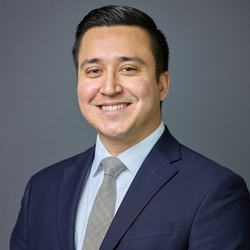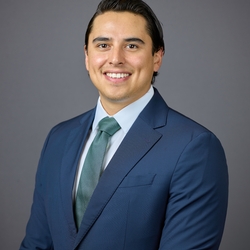Department of Labor Issues Temporary Regulations on Paid Leave Under the FFCRA
Contact Clara (C.B.) Burns, Charles C. High, Jr., Michael D. McQueen and Gilbert L. Sanchez -
April 1, 2020
Today, the Department of Labor (“DOL”) issued temporary regulations governing paid leave under the Families First Coronavirus Response Act (“FFCRA”). As mentioned in previous bulletins www.kempsmith.com/dol-provides-guidance-on-families-first-coronavirus-response-act-, the FFCRA provides certain employees with paid sick leave under the Emergency Paid Sick Leave Act (“EPSLA”) and the Emergency Family and Medical Leave Expansion Act (“EFMLEA”). While the FFCRA provided the law’s main points, Congress left the details to the DOL. These temporary regulations provide those details. Here are the main points from the regulations:
• As amended by the CARES Act, eligible employees under the EFMLEA now include employees who were laid off or otherwise terminated on or after March 1, 2020, had worked for the employer for at least 60 calendar days, and were subsequently rehired by the same employer before December 31, 2020.
• The first 10 days of the EFMLEA (if unpaid by the employer) can be paid using other forms of employer-provided sick leave or paid leave under the EPSLA.
• While the EFMLEA only applies to leave to care for a son or daughter under the age of 18, the DOL will use the more expansive definition of “son or daughter” under the FMLA to include a son or daughter over 18 years of age only if that son or daughter is “incapable of self-care because of a mental of physical disability.”
• In terms of pay, normally, under the FLSA, an employer has to pay an employee for all time between the first and last work activity during a day. Here, however, the DOL says that rule will not apply to teleworking under either statute in order to give employers the opportunity to set telework schedules without having to pay for all time between the first and last activity. For example, an employee that works from 7 am -2 pm and 5 pm -7 pm would normally be paid from 7 am to 7 pm. But under these regulations, the employer would not have to pay for the time between 2 pm and 5 pm.
• The EPSLA applies if an employee is subject to a quarantine or isolation order, which the DOL defines as any order that advises citizens to shelter in place, stay at home, quarantine, or otherwise restricts their mobility.
• Neither the EPSLA nor the EFMLEA would apply (and therefore paid leave would not be required) whenever there is no work because the business has closed or laid off/furloughed its employees. This is true even if the business closes or employees are laid off because of the Coronavirus or any quarantine order. In other words, if the business shuts down or lays off its employees, those employees are not entitled to paid leave under either statute because there is no work to be done (i.e., they cannot work or telework).
• Paid leave requires that an employee be unable to work or “telework.” The DOL says an employee can telework (and would therefore not be entitled to paid leave) if: (1) the employer has work for the employee to perform; (2) the employer permits the employee to work from where they are quarantined; and, (3) there are no extenuating circumstances that prevent the employee from performing that work. For example, if a law firm permits its lawyers to work from home, a lawyer would not be prevented from working by a stay-at-home order, and thus may not take paid sick leave as a result of being subject to that order. In this circumstance, the lawyer is able to telework even if she is required to use her own computer instead of her employer’s computer. But, she would not be able to telework in the event of a power outage or similar extenuating circumstance and would therefore be eligible for paid sick leave during the period of the power outage or extenuating circumstance due to the quarantine or isolation order.
• Both statutes allow an employee to use paid leave to care for a son or daughter whose school has closed. The temporary regulations clarify that the employee is entitled to leave only when the employee needs to, and actually is, caring for his or her child. Generally, an employee does not need to take such leave if another suitable individual— such as a co-parent, co-guardian, or the usual child care provider—is available to provide the care the employee’s child needs.
• When calculating the number of hours a employee with varied hours works, an employer should take the number of hours worked per day, averaged over a 6-month period (or, if they have worked for less than 6-months, based on their agreed number of hours when hired) and multiply it by 14 (i.e., the number of calendar days in two weeks). If there was no agreement on the number of hours to be worked for an employee that worked less than 6 months, the DOL instructs employers to use the average of the actual amount worked during the employee’s entire employment.
• For purposes of the EPSLA, a “full time” employee is one who is normally scheduled 40 hours in a workweek, or, if they have a varied schedule, one that is normally scheduled, on average, for 40 hours.
• For leave under the EFMLEA, employers can require employees to use other leave concurrently with leave under that statute.
• To prevent inconsistencies between the two statutes (that results for employees who work less than 5 days a week, such as 12-hour shifts, or work short hours during the week), while the EFMLEA allows for 10 days of unpaid leave, the DOL will instead use a 2-week period rather than 10 actual days.
• An eligible employee under EFMLEA has to have been employed for 30 calendar days, which the DOL interprets to mean the employee was on the payroll for 30 calendar days.
• The 500-employee threshold applies at the time leave would be taken. So an employer with 450 employees on April 15th would have to provide paid leave taken on April 15th, but if the employer hired 51 employees on April 25th, that employer would not have to provide leave for any request made after that date.
• In terms of the exemption for small businesses, the regulations state that a small employer is exempt from the requirement to provide such leave when: (1) such leave would cause the small employer’s expenses and financial obligations to exceed available business revenue and cause the small employer to cease operating at a minimal capacity; (2) the absence of the employee or employees requesting such leave would pose a substantial risk to the financial health or operational capacity of the small employer because of their specialized skills, knowledge of the business, or responsibilities; or (3) the small employer cannot find enough other workers who are able, willing, and qualified, and who will be available at the time and place needed, to perform the labor or services the employee or employees requesting leave provide, and these labor or services are needed for the small employer to operate at a minimal capacity. For reasons (1), (2), and (3), the employer may deny paid sick leave or expanded family and medical leave only to those otherwise eligible employees whose absence would cause the small employer’s expenses and financial obligations to exceed available business revenue, pose a substantial risk, or prevent the small employer from operating at minimum capacity, respectively. To use these exemptions, the employer must document the reasons for denying leave.
• Intermittent leave under either statute is allowed only if the employer and employee agree. If there is no agreement, intermittent leave is not required. If they do agree, the DOL prohibits some employees from taking intermittent leave (such as when the risk of working may lead to the spread of COVID-19).
• An employee who has exhausted regular FMLA leave prior to requesting leave under the EFMLEA, is not entitled to leave under EFMLEA until their leave under the FMLA replenishes.
• To grant leave under either law, the employee must provide written documentation including: (1) the employee’s name; (2) the date(s) for which leave is requested; (3) the COVID-19 qualifying reason for leave; and (4) a statement representing that the employee is unable to work or telework because of the COVID-19 qualifying reason. An employee must provide additional documentation depending on the COVID-19 qualifying reason for leave. For instance, an employee may have to provide documentation showing the government entity that issued the quarantine order or the name of the school that closed. An employer must keep that documentation for 4 years. If the information is provided orally, the employer must document it and retain that information for 4 years.
• The temporary regulations also confirm that any leave granted by the employer prior to the enactment of these laws will not count towards the entitlements under either law. In other words, employees are entitled to leave under both statutes regardless of any other paid leave the employer provided prior to April 1, 2020. By the same token, employees have no right to use these new paid leave laws retroactively before April 1, 2020.
While the temporary regulations contain many other details that would be too lengthy to cover, the above provides some insight into the highlights. If you need any guidance on the FFCRA, the statutes, or the regulations, please contact Kemp Smith’s Labor and Employment Department.
• As amended by the CARES Act, eligible employees under the EFMLEA now include employees who were laid off or otherwise terminated on or after March 1, 2020, had worked for the employer for at least 60 calendar days, and were subsequently rehired by the same employer before December 31, 2020.
• The first 10 days of the EFMLEA (if unpaid by the employer) can be paid using other forms of employer-provided sick leave or paid leave under the EPSLA.
• While the EFMLEA only applies to leave to care for a son or daughter under the age of 18, the DOL will use the more expansive definition of “son or daughter” under the FMLA to include a son or daughter over 18 years of age only if that son or daughter is “incapable of self-care because of a mental of physical disability.”
• In terms of pay, normally, under the FLSA, an employer has to pay an employee for all time between the first and last work activity during a day. Here, however, the DOL says that rule will not apply to teleworking under either statute in order to give employers the opportunity to set telework schedules without having to pay for all time between the first and last activity. For example, an employee that works from 7 am -2 pm and 5 pm -7 pm would normally be paid from 7 am to 7 pm. But under these regulations, the employer would not have to pay for the time between 2 pm and 5 pm.
• The EPSLA applies if an employee is subject to a quarantine or isolation order, which the DOL defines as any order that advises citizens to shelter in place, stay at home, quarantine, or otherwise restricts their mobility.
• Neither the EPSLA nor the EFMLEA would apply (and therefore paid leave would not be required) whenever there is no work because the business has closed or laid off/furloughed its employees. This is true even if the business closes or employees are laid off because of the Coronavirus or any quarantine order. In other words, if the business shuts down or lays off its employees, those employees are not entitled to paid leave under either statute because there is no work to be done (i.e., they cannot work or telework).
• Paid leave requires that an employee be unable to work or “telework.” The DOL says an employee can telework (and would therefore not be entitled to paid leave) if: (1) the employer has work for the employee to perform; (2) the employer permits the employee to work from where they are quarantined; and, (3) there are no extenuating circumstances that prevent the employee from performing that work. For example, if a law firm permits its lawyers to work from home, a lawyer would not be prevented from working by a stay-at-home order, and thus may not take paid sick leave as a result of being subject to that order. In this circumstance, the lawyer is able to telework even if she is required to use her own computer instead of her employer’s computer. But, she would not be able to telework in the event of a power outage or similar extenuating circumstance and would therefore be eligible for paid sick leave during the period of the power outage or extenuating circumstance due to the quarantine or isolation order.
• Both statutes allow an employee to use paid leave to care for a son or daughter whose school has closed. The temporary regulations clarify that the employee is entitled to leave only when the employee needs to, and actually is, caring for his or her child. Generally, an employee does not need to take such leave if another suitable individual— such as a co-parent, co-guardian, or the usual child care provider—is available to provide the care the employee’s child needs.
• When calculating the number of hours a employee with varied hours works, an employer should take the number of hours worked per day, averaged over a 6-month period (or, if they have worked for less than 6-months, based on their agreed number of hours when hired) and multiply it by 14 (i.e., the number of calendar days in two weeks). If there was no agreement on the number of hours to be worked for an employee that worked less than 6 months, the DOL instructs employers to use the average of the actual amount worked during the employee’s entire employment.
• For purposes of the EPSLA, a “full time” employee is one who is normally scheduled 40 hours in a workweek, or, if they have a varied schedule, one that is normally scheduled, on average, for 40 hours.
• For leave under the EFMLEA, employers can require employees to use other leave concurrently with leave under that statute.
• To prevent inconsistencies between the two statutes (that results for employees who work less than 5 days a week, such as 12-hour shifts, or work short hours during the week), while the EFMLEA allows for 10 days of unpaid leave, the DOL will instead use a 2-week period rather than 10 actual days.
• An eligible employee under EFMLEA has to have been employed for 30 calendar days, which the DOL interprets to mean the employee was on the payroll for 30 calendar days.
• The 500-employee threshold applies at the time leave would be taken. So an employer with 450 employees on April 15th would have to provide paid leave taken on April 15th, but if the employer hired 51 employees on April 25th, that employer would not have to provide leave for any request made after that date.
• In terms of the exemption for small businesses, the regulations state that a small employer is exempt from the requirement to provide such leave when: (1) such leave would cause the small employer’s expenses and financial obligations to exceed available business revenue and cause the small employer to cease operating at a minimal capacity; (2) the absence of the employee or employees requesting such leave would pose a substantial risk to the financial health or operational capacity of the small employer because of their specialized skills, knowledge of the business, or responsibilities; or (3) the small employer cannot find enough other workers who are able, willing, and qualified, and who will be available at the time and place needed, to perform the labor or services the employee or employees requesting leave provide, and these labor or services are needed for the small employer to operate at a minimal capacity. For reasons (1), (2), and (3), the employer may deny paid sick leave or expanded family and medical leave only to those otherwise eligible employees whose absence would cause the small employer’s expenses and financial obligations to exceed available business revenue, pose a substantial risk, or prevent the small employer from operating at minimum capacity, respectively. To use these exemptions, the employer must document the reasons for denying leave.
• Intermittent leave under either statute is allowed only if the employer and employee agree. If there is no agreement, intermittent leave is not required. If they do agree, the DOL prohibits some employees from taking intermittent leave (such as when the risk of working may lead to the spread of COVID-19).
• An employee who has exhausted regular FMLA leave prior to requesting leave under the EFMLEA, is not entitled to leave under EFMLEA until their leave under the FMLA replenishes.
• To grant leave under either law, the employee must provide written documentation including: (1) the employee’s name; (2) the date(s) for which leave is requested; (3) the COVID-19 qualifying reason for leave; and (4) a statement representing that the employee is unable to work or telework because of the COVID-19 qualifying reason. An employee must provide additional documentation depending on the COVID-19 qualifying reason for leave. For instance, an employee may have to provide documentation showing the government entity that issued the quarantine order or the name of the school that closed. An employer must keep that documentation for 4 years. If the information is provided orally, the employer must document it and retain that information for 4 years.
• The temporary regulations also confirm that any leave granted by the employer prior to the enactment of these laws will not count towards the entitlements under either law. In other words, employees are entitled to leave under both statutes regardless of any other paid leave the employer provided prior to April 1, 2020. By the same token, employees have no right to use these new paid leave laws retroactively before April 1, 2020.
While the temporary regulations contain many other details that would be too lengthy to cover, the above provides some insight into the highlights. If you need any guidance on the FFCRA, the statutes, or the regulations, please contact Kemp Smith’s Labor and Employment Department.






